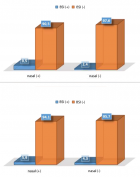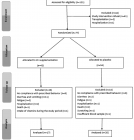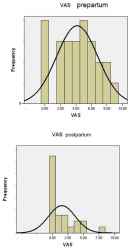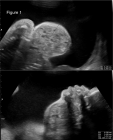Table of Contents
Predictive Psychological Factors of Problematic Alcohol use in University Students
Published on: 30th December, 2017
OCLC Number/Unique Identifier: 7317646409
The objective of this study is to determine prevalence of alcohol-substance use among university students, and to investigate the correlation between the childhood abuse, suicide probability and anger expression styles in students who have drinking p... roblems. A survey was carried out among randomly selected students from the Faculty of Education in Baskent University in Turkey. Study sample consists of 399 university students. Childhood Trauma Questionnaire (CTQ), Trait Anger and Anger Expressions Scales (T-Anger-Anger EX), and Suicide Probability Scale (SPS) were used. The CAGE questionnaire was applied to identify the problems of alcohol use. Probable presence of an alcohol use disorder is indicated by a score of 1+, whereas a score of 2+ was taken as the cut-off point for assessing presence of clinically significant alcohol use problems. Data were analyzed using with t test and multiple binary logistic regression. Of the whole sample 36.9% reported that they had ever tried drinking alcohol. The overall prevalence of alcohol use problems according to CAGE 1+ was 14.4% and CAGE 2+ was 7.3%. Sexual abuse and Anger-In were predictors of CAGE 1+, suicide probability was predictor of CAGE2+. Childhood trauma experiences especially, sexual abuse, suicide probability, trait anger, the anger expressed inside and outside were main factors to identify alcohol use problems. Professionals and parents must pay attention to childhood traumatic experiences, suicide and anger expression styles in youths with alcohol use problems. Show more >
The effects of alcohol taxation and pricing policies on vodka sales in Russia
Published on: 29th December, 2017
OCLC Number/Unique Identifier: 7317654733
Background: The majority of aggregate econometric studies indicate that higher taxes and real prices on alcohol significantly reduce the alcohol consumption.
Objectives: To estimate the effects of recent alcohol taxation and pricing policies on vodka... sales per capita in Russia.
Methods: Trends in the affordability of vodka, excise tax rates on vodka, real and minimum price of vodka and per capita vodka sales between 2010 and 2015, were compared.
Results: A Pearson’s correlation analysis suggests a positive and statistically significant association between the affordability of vodka and per capita vodka sales. The association between vodka sales and excise tax rates on vodka, the real price of vodka and minimum price of vodka was negative.
Conclusions: These findings indicate that pricing policy has potential to reduce binge drinking of vodka in Russia. Show more >
Addiction to self-strangulation: a case-report
Published on: 5th December, 2017
OCLC Number/Unique Identifier: 7317654648
Introduction: DSM-5 mentions autoerotic asphyxia in the paraphilic disorders section, as a specifier for the diagnostic of sexual masochism disorder. Strangulation activities have also been observed in the “choking game”. The term “strangulation acti... vity” is considered as more appropriate than “choking game”. While sharing a same behavior, autoerotic asphyxia and non auto-erotic strangulation activities might represent a very distinct pattern of disorders. We describe here a case report of a 25-year old male internship student who has practiced manual self-strangulation up to 40 times a day since adolescence. In the examination of this case we identify individual clinical aspects of this case in a process-based holistic case conceptualization.
Case description: The patient is a 25 years old male with a post-graduate degree who presented with a recent history of poor work performance and work-related stress during an internship. He has a concomitant history of both ketamine and cannabis use disorders, and reports urges to self-strangulate, sometimes specifically avoiding contact with friends engage in this behavior and that he has never attempted to discontinue self-strangulation. Neuropsychological assessment found a cognitive functioning below that expected given his educational level. Our intervention consists of a 3-weeks cognitive and motivational therapy program in addiction unit with associated abstinence.
Conclusion: Autoerotic asphyxia is a behavior observed not only in the context of sexual masochism disorder, but also as a specific addictive behavior, in the absence of sexual arousal, possibly as a result of emotional dysregulation. Show more >
Novel Challenges for the Therapeutics of Depression: Pharmacological Modulation of Interaction between the Intracellular Signaling Pathways Mediated by Ca2+ and cAMP
Published on: 30th January, 2017
OCLC Number/Unique Identifier: 7317597566
Depression is a psychiatric disease resulting mainly by dysfunction of serotoninergic and monoaminergic neurotransmission in central nervous system (CNS). Due to the multifaceted nature of depression and our limited understanding on its etiology, dep... ression is difficult to be treated with currently available pharmaceuticals. Then, new therapeutic strategies for depression have been proposed. Since 1975, several clinical studies have reported that L-type Ca2+ channel blockers (CCBs), used in anti-hypertensive therapy, produce increase of plasma catecholamine levels and tachycardia, typical symptoms of sympathetic hyperactivity. Despite these adverse effects of CCBs have been initially attributed to adjust reflex of arterial pressure, during almost four decades these enigmatic phenomena remained unclear. In 2013, we discovered that this paradoxical sympathetic hyperactivity produced by CCBs results from the increase of catecholamines release from sympathetic nerves, and adrenal chromaffin cells, due to its modulatory action on the interaction between intracellular signaling pathways mediated by Ca2+ and cAMP (Ca2+/cAMP signalling interaction). Then, the pharmacological modulation of this interaction by combined use of L-type CCBs, and cAMP-enhancer compounds, could be a more efficient (and safer) therapeutic strategy to produce increase of serotoninergic and monoaminergic neurotransmission in the CNS due to enhance of serotonin and monoamines release, thus attenuating clinical symptoms of depression in humans. Show more >

HSPI: We're glad you're here. Please click "create a new Query" if you are a new visitor to our website and need further information from us.
If you are already a member of our network and need to keep track of any developments regarding a question you have already submitted, click "take me to my Query."


















































































































































